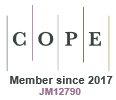Most-northern record of parma wallaby (Notamacropus parma)
Paul D. Meek A B * , Lucy Collingridge C , Jakub Juszczak D , Elly Gooch B and Peter J. S. Fleming B E
B E
A
B
C
D
E
Abstract
We report on a new northern record of the parma wallaby (Notamacropus parma). This animal was captured and subsequently released during a free-ranging dog trapping and collaring program in agricultural land north of Tooloom National Park, New South Wales (NSW), Australia. The parma wallaby can be difficult to identify where there are sympatric wallabies and pademelons, especially on camera-trap images. While research is underway to better understand the occurrence of this species, its distribution is not accurately known. This incidental detection has extended the known range of the parma wallaby in NSW and accords with the modelled distribution of the species.
Keywords: capture and release, distribution, foot-hold trap, Macropodidae, non-target, range confirmation, sympatric, threatened species.
References
Allen, B. L., Ballard, G. A., Fleming, P. S., Meek, P. D., and Smith, D. (2022). Improving Animal Welfare Outcomes for Live-Trapped Terrestrial Mammals in Australia. In ‘Mammal Trapping: Wildlife Management, Animal Welfare and International Standards’. (Ed. G. Proulx) pp. 97–120. (Alpha Wildlife Publications: AB, Canada)
Fleming, P. J. S., Allen, L. R., Berghout, M. J., Meek, P. D., Pavlov, P. M., Stevens, P., Strong, K., Thompson, J. A., and Thomson, P. C. (1998). The performance of wild-canid traps in Australia: efficiency, selectivity and trap-related injuries. Wildlife Research 25, 327-338.
| Crossref | Google Scholar |
Goldingay, R. L. (2024a). Anatomy of a post-wildfire recovery: responses of mammals to a Black Summer wildfire in a fox-free landscape. Forest Ecology and Management 569, 122205.
| Crossref | Google Scholar |
Goldingay, R. L. (2024b). The influence of bait and camera type on detection of a spectrum of medium-sized Australian mammals. Australian Mammalogy 46, AM23020.
| Crossref | Google Scholar |
Hayward, M. W., Vernes, K., Ballard, G., Budden, M., Clulow, J., Dooley, E., Fleming, P. J., Griffin, A., Law, B., Lees, D., Meek, P. D., Meyer, N., and Tuckey, K. (2022). Conservation case study: basing IUCN Red List status assessments on an absence of knowledge: the case of the parma wallaby (Notomacropus parma). In ‘Imperiled: The Encyclopedia of Conservation’ (Eds D. A. DellaSala and M.I. Goldstein) pp 324–329.
Maynes, G. M. (1973). Reproduction in the parma wallaby, Macropus parma, Waterhouse. Australian Journal of Zoology 21, 331-351.
| Crossref | Google Scholar | PubMed |
Maynes, G. (1974). Occurence and field recognition of Macropus parma. Australian Zoologist 18, 72-87.
| Google Scholar |
Maynes, G. (1977). Distribution and aspects of the biology of the parma Wallaby, Macropus parma, in New South Wales. Wildlife Research 4, 109-125.
| Crossref | Google Scholar |
Meek, P. D., Jenkins, D., Morris, B., Ardler, A., and Hawksby, R. (1995). Use of two humane leg-hold traps for catching pest species. Wildlife Research 22, 733-739.
| Crossref | Google Scholar |
Meek, P. D., Ballard, G. A., and Fleming, P. J. S. (2018). Techniques and practices of Australian pest animal trappers. Pacific Conservation Biology 25, 257-265.
| Crossref | Google Scholar |
Meek, P. D., Ballard, G. A., Mifsud, G., and Fleming, P. J. S. (2022). Foothold trapping for predators: Australia’s history, present and a future pathway for humane use. In ‘Mammal Trapping: Wildlife Management, Animal Welfare and International Standards. Vol. 5’. (Ed. G. Proulx) pp. 81–96. (Alpha Wildlife Publications: AB, Canada)
Read, D., and Fox, B. (1991). Assessing the habitat of the parma wallaby, Macropus parma (Marsupialia: Macropodidae). Wildlife Research 18, 469-477.
| Crossref | Google Scholar |
Vernes, K., and Cooper, T. (2007). Association of parma wallabies (Macropus parma) with sedge swamps in Gibraltar Range National Park. Australian Mammalogy 29, 111-113.
| Crossref | Google Scholar |


